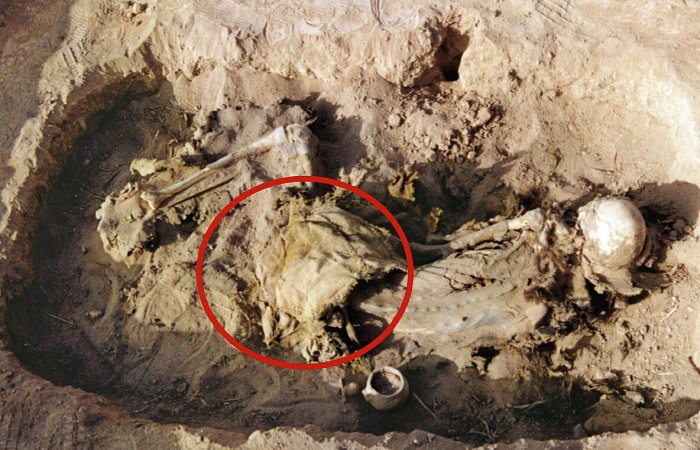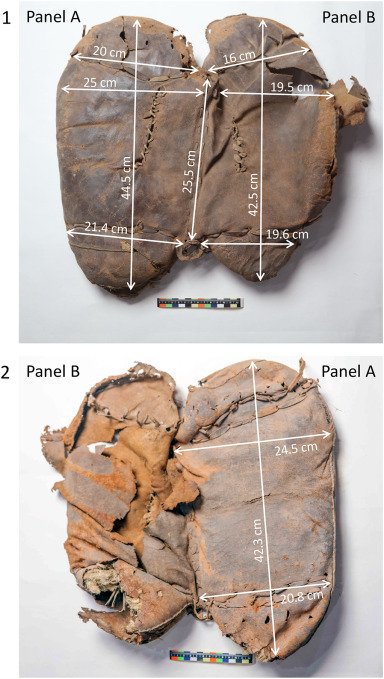Jan Bartek – AncientPages.com – Scientists have unearthed what could be the world’s oldest known saddle. The well-preserved soft leather saddle recovered from the tomb of a female deceased at the Yanghai cemetery site in the Turfan Basin at the eastern end of the Tian Shan mountains.
Researchers have now presented a detailed analysis describing the saddle’s condition and how it was made. “Compared with the oldest known saddle from the Scythian Pazyryk culture site Tuekta barrow no. 1 (430–420 BCE) in north-western Altai, the Yanghai specimen radiocarbon dated to 727–396 BCE (95.4% probability range) is contemporaneous or possibly older.

Yanghai cemetery tomb IIM205 with the position of the leather saddle indicated by the red circle. After: Turfan Administration of Cultural Relics et al., 2019, plate 31.3. Credit: Archaeological Research in Asia (2023). DOI: 10.1016/j.ara.2023.100451
The saddle features the basic elements of soft saddle construction that are still used today: two stuffed, wing-shaped hides sewn together along the outer edges and separated by a central gullet-like spacer and lens-shaped support elements, resembling knee and thigh rolls of modern saddles. Being a masterful piece of leather- and needlework, it is, however, less complex compared to Scythian saddles from the 5th–3rd centuries BCE,” the science team writes in their study.
The saddle was recovered from a tomb made for a woman dressed in what appeared to be riding gear, and the saddle was situated in a way to make it look as if she were sitting on it. Dating of the woman and saddle show they are from about 2,700 years ago.
“The arid climate conditions of the past millennia in the Turfan area of Northwest China led to an exceptional preservation of organic materials and objects (produced locally or obtained through exchange and distant contacts), allowing identification, analysis, and reconstruction of early manufacturing technologies not recognizable elsewhere.”
The saddle is ” possibly older than the earliest Scythian saddles from the Altai region and eastern Kazakhstan investigated and published so far. Thus, together with the non-directly dated saddle from Zaghunluq, the one from Yanghai currently stands at the beginning of the history of saddle making. Unlike the younger finds from the elite Scythian burials, this early saddle was made from inexpensive materials and used by a common woman. Yet it is testimony to the same mastery of craftsmanship.

Measurements of the Yanghai leather saddle (IIM205:20). 1 – Upper side; 2 – Underside. PH๏τos: P. Wertmann. Archaeological Research in Asia (2023). DOI: 10.1016/j.ara.2023.100451
Both the functional design considering the anatomy and well-being of horse and rider, and the fine execution of the crafting techniques, i.e. leather- and needlework, demonstrate that the Yanghai saddle was manufactured by a specialist familiar with leatherwork, horse husbandry, and riding. The lack of elaborate decorative applications together with traces of wear and repair spots, some of which were executed in a simpler and cruder way, imply that the saddle was an every-day item maintained by the user,” scientists write in their study.
See also: More Archaeology News
Researchers suggest the saddle was made for a rider who ᴀssisted with herding animals. The intriguing archaeological find could be evidence that the earliest use of saddles was by people in China, scientists say.
The study was published in the journal Archaeological Research in Asia
Written by Jan Bartek – AncientPages.com Staff Writer





